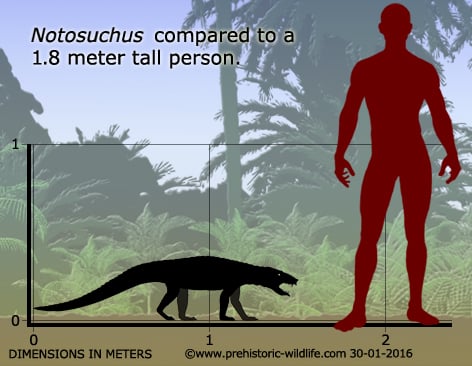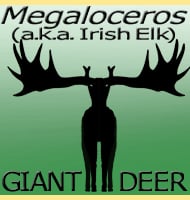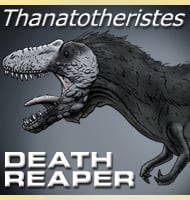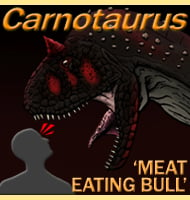In Depth
Notosuchus was named in 1896 and was the first of what would become known as the notosuchian crocodiles that would be described to science. Attaining sizes up to one and a half meters in length, Notosuchus was small when compared to most other crocodiles, though itself still larger than most known notosuchian genera. Notosuchus was also one of the first crocodiles confirmed as being mostly if not entirely terrestrial. This means that Notosuchus spent most of their time roaming about on dry land, only approaching water to drink.
One of the most startling discoveries concerning Notosuchus came in 2008 when a much more complete skull preserving a higher level of detail was discovered. The describers of this study (Fiorelli & Calvo) showed that not only did the skull lack a bony nasal septum, but it was quite likely that a short muscular trunk probably grew from the end of the snout. The lower jaw also supported the placement of a fleshy lower lip that would have worked in conjunction with the short trunk to grip things. It is also possible that Notosuchus may have also had a fleshy cheek to prevent food from falling out of the sides of the mouth when being chewed. It now seems that Notosuchus would have lived like a modern day wild pig, sniffing through the undergrowth and leaf litter, using smell to identify food that was otherwise hidden from other animals.
Further Reading
- On two Mesozoic crocodilians from the red sandstones of the territory of Neuquen (Argentina Republic). Notosuchus (genus novum) and Cynodontosuchus (genus novum). Anales del Museo de La Plata. - Paleontolog�a Argentina 4:1-20. - Arthur Smith Woodward - 1896. - Nuevos restos de Notosuchus terrestris Woodward, 1896 (Crocodyliformes: Mesoeucrocodylia) del Cret�cico Superior (Santoniano) de la Provincia de Neuqu�n, Patagonia, Argentina. - 79p. Tesis (Grado) Universidad Nacional de C�rdoba, C�rdoba. - L. E. Fiorelli - 2005. - New remains of Notosuchus terrestris Woodward, 1896 (Crocodyliformes: Mesoeucrocodylia) from Late Cretaceous of Neuquen, Patagonia, Argentina. - Arquivos do Museu Nacional, Rio de Janeiro 66 (1): 83–124. - L. E. Fiorelli & J. O. Calvo - 2008. – Re-description of the cranio-mandibular anatomy of Notosuchus terrestris (Crocodyliformes, Mesoeucrocodylia) from the Upper Cretaceous of Patagonia. – Cretaceous Research. 83: 3–39. – F. Barrios, P. Bona, A. P. Carabajal & Z. Gasparini – 2017.










